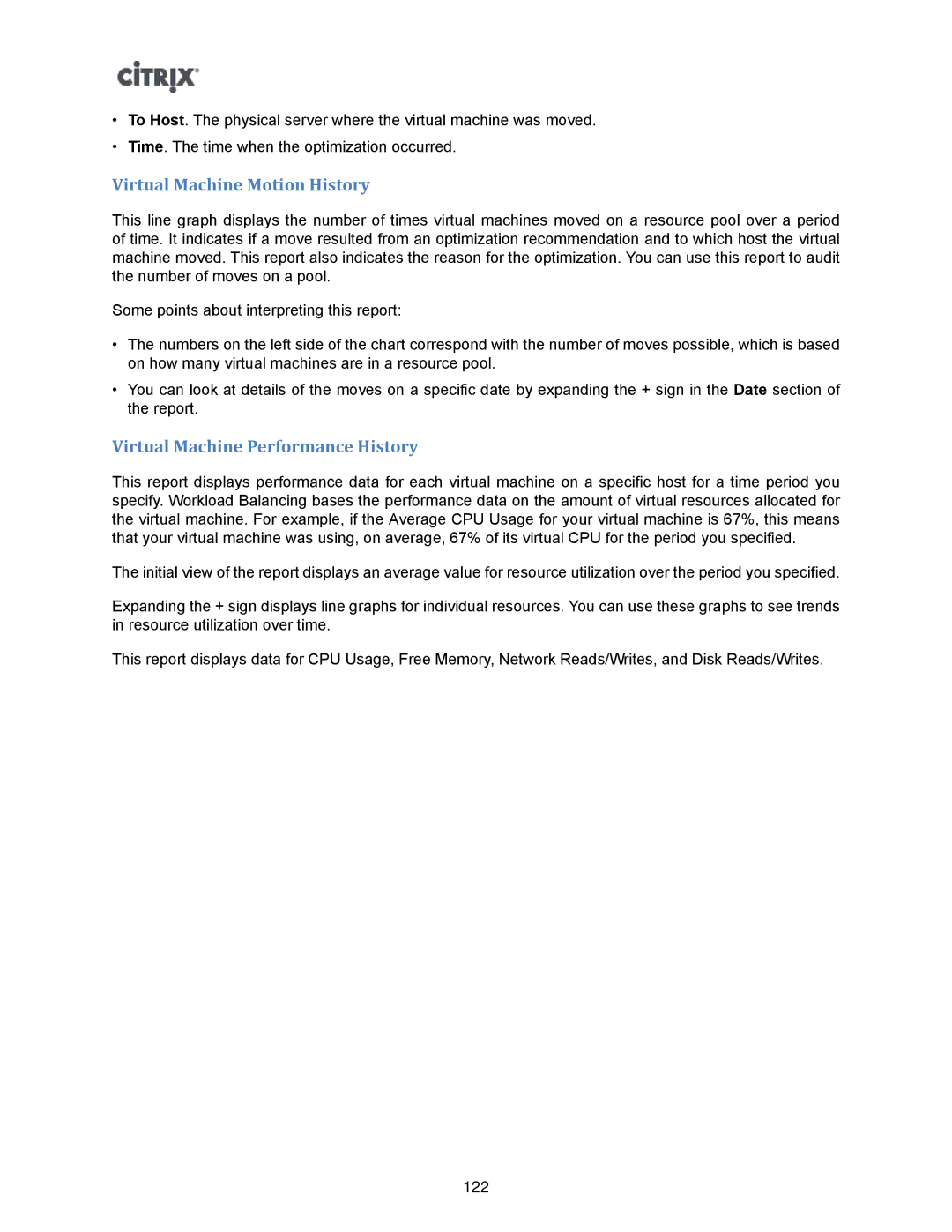•To Host. The physical server where the virtual machine was moved.
•Time. The time when the optimization occurred.
Virtual Machine Motion History
This line graph displays the number of times virtual machines moved on a resource pool over a period of time. It indicates if a move resulted from an optimization recommendation and to which host the virtual machine moved. This report also indicates the reason for the optimization. You can use this report to audit the number of moves on a pool.
Some points about interpreting this report:
•The numbers on the left side of the chart correspond with the number of moves possible, which is based on how many virtual machines are in a resource pool.
•You can look at details of the moves on a specific date by expanding the + sign in the Date section of the report.
Virtual Machine Performance History
This report displays performance data for each virtual machine on a specific host for a time period you specify. Workload Balancing bases the performance data on the amount of virtual resources allocated for the virtual machine. For example, if the Average CPU Usage for your virtual machine is 67%, this means that your virtual machine was using, on average, 67% of its virtual CPU for the period you specified.
The initial view of the report displays an average value for resource utilization over the period you specified.
Expanding the + sign displays line graphs for individual resources. You can use these graphs to see trends in resource utilization over time.
This report displays data for CPU Usage, Free Memory, Network Reads/Writes, and Disk Reads/Writes.
122
